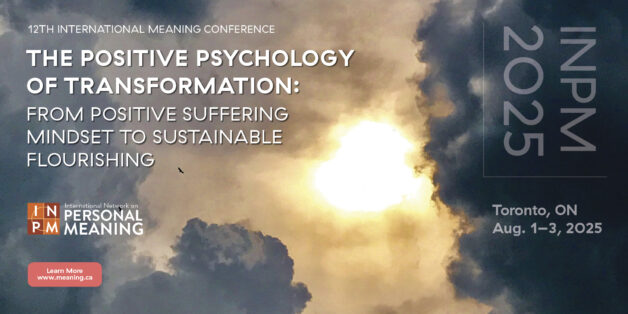From personal tragedies, such as accidents, illnesses, deaths, and relationship violence, to larger scale catastrophes, such as terrorist attacks, natural disasters, communal crimes, and violence, psychological traumas and losses could befall anyone in unpredictable ways.
Yet most of us assume that whatever we encounter tomorrow will more or less be consistent with what we’ve encountered before in our routine daily experiences. For those of us who are more fortunate, our presumptions and perceptions about ourselves and the world may go unchallenged for years, as life falls more or less within our expectations. For others, however, the sudden impact of an unexpected tragedy may ambush life-long beliefs that they’ve relied on for a predictable world.
Janoff-Bulman (1992) refers to disruptions of these fundamental beliefs as shattered assumptions. All human beings have certain assumptions about life that are not usually examined consciously. According to Janoff-Bulman, three assumptions are prominent: The world is benevolent, the world is meaningful, and the self is worthy. Based on these beliefs, most people tend to approach the world with optimism, trusting in their own worthiness, safety, and security. However, when a traumatic experience challenges these assumptions, the individual is confronted with a decision: (1) Uphold the previous beliefs and deny the reality, or (2) accept the new assumptions that the world is not benevolent, the world is not meaningful, and/or the self is not worthy. Those who deny their new reality are more prone to develop posttraumatic stress, depression, and anxiety.
The actor and activist Christopher Reeve provides an example. After his horse stopped suddenly in front of an obstacle, Reeve was catapulted head first to the ground, damaging his spinal cord and becoming quadriplegic. Early on, he lamented the life he had lost and his new existence as a burden on his family. Reeve could have refused to accept his new reality and chosen suicide. However, with his wife’s encouragement, he accepted his new limitations and moved forward: “You just play the hand you’re dealt… I think the game is worthwhile” (Bishop, 2012). He would go on to build a new life and new goals, raising money for spinal cord research.
In Man’s Search for Meaning, Frankl (1985) stated that if one believes life is meaningful regardless of circumstance and people are capable of transforming life’s negatives into positives, then it is possible “to say yes to life amidst the most miserable circumstance inherent to the human existence” (pp. 161-162). In line with Frankl, Wong (2001) developed a model of tragic optimism (TO), which embraces the negative aspects of life and, at the same time, emphasizes the positives.
The TO model comprises five interlocking components: affirmation of the value of life, courage to face adversity, self-transcendence in serving a higher purpose, faith or trust in God and others, and acceptance of what cannot be changed (Leung, Steinfort, Vroon, & Wong, 2002; Wong, 2001). Accepting what cannot be changed could ultimately lead to embracing the irreversible nature of the tragic experience/circumstance, willingness to rise above pain, and the eventual growth inspired by the recovery journey. In addition to acceptance, affirming the value of life helps the individual find purpose in recovery, as well as the courage to face future challenges. Moreover, strengthening the individual’s trusting relations with God and others elicits support from resources outside the self, thus making the journey more bearable and less solitary. Finally, through self-transcendence and altruistic acts, the trauma survivor shifts the focus from loss to constructive deeds and allows new discoveries and developments of personal meaning and strengths. An additional benefit to their service to others is the fostering of a connection with others and the community (Leung, 2019).
Wong’s tragic optimism provides a conceptual roadmap for clinicians to help trauma survivors acknowledge the bleakness of their traumatic experiences, while affirming the meaningful and virtuous aspects of life. Clinical studies have demonstrated the effectiveness of the model when used as an overarching framework in combination with other evidenced-based trauma therapies (Leung, 2015, 2019; Leung, DuMerton, Takano, & Wong, 2014; Leung, Steinfort, Vroon, & Wong, 2002).
References
Bishop, L. (2012, May 20). Barbara Walters shares wisdom from her ‘most thoughtful’ interviewees. YaleNews. Retrieved from https://news.yale.edu/2012/05/20/walters-shares-wisdom-her-most-thoughtful-interviewees
Frankl, V. E. (1985). Man’s search for meaning: Revised and updated. New York, NY: Washington Square.
Janoff-Bulman, R. (1992). Shattered assumptions: Towards a new psychology of trauma. New York, NY: Macmillan.
Leung, M. M. (2015, October). A meaning approach to trauma: Meaning therapy for complex PTSD. Paper session presented at the Trinity Western University’s Counselling Psychology Colloquium, Langley, BC.
Leung, M. M. (2019). Tragic optimism: An integrative meaning-centered approach to trauma treatment. Counselling Psychology Quarterly. Advance online publication. https://doi.org/10.1080/09515070.2019.1633497
Leung, M. M., DuMerton, L., Takano, Y., & Wong, P. T. P. (2014, July). Meaning, responsibility, and trauma. Symposium presented at the First Congress on the Construction of Personal Meaning, Vancouver, BC.
Leung, M. M., Steinfort, T., Vroon, E. J., & Wong, P. T. P. (2002). Life Attitudes Scale: Development and validation of a measurement of the construct of tragic optimism (Unpublished master’s thesis). Trinity Western University, Langley, BC.
Wong, P. T. P. (2001, October). Tragic optimism, realistic pessimism, and mature happiness: An existential model. Paper presented at the Positive Psychology Summit, Washington, DC.

 Meaning Conference 2025 will be the INPM’s first in-person conference with a virtual option after the pandemic.
Meaning Conference 2025 will be the INPM’s first in-person conference with a virtual option after the pandemic.